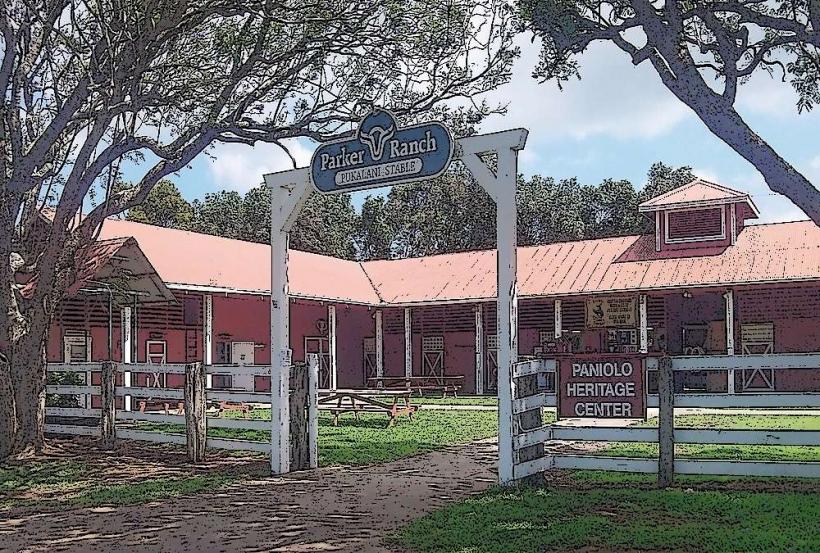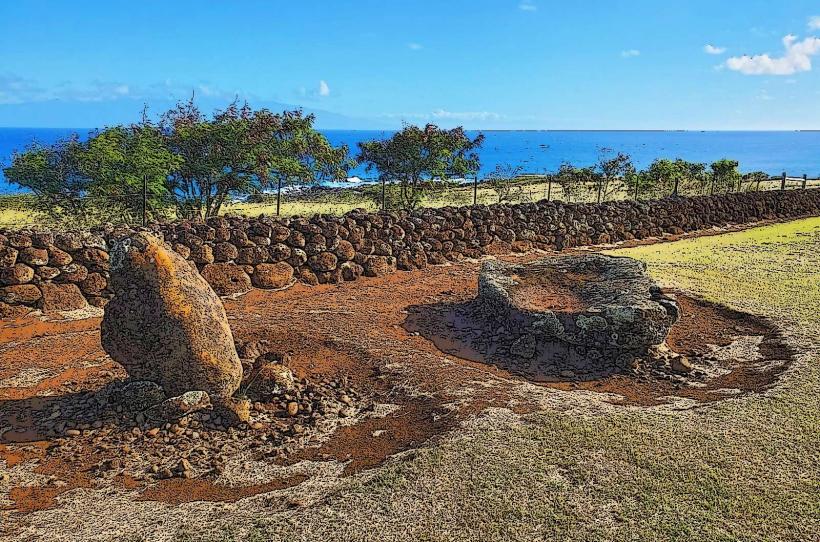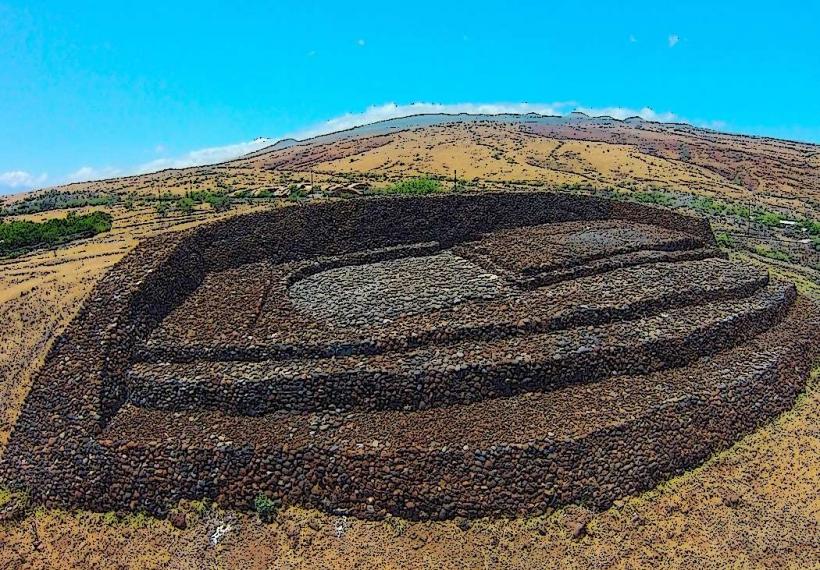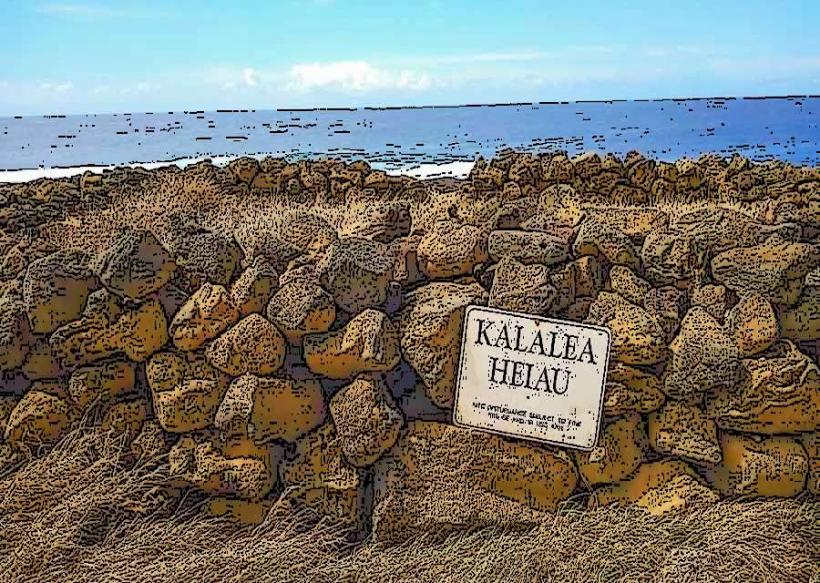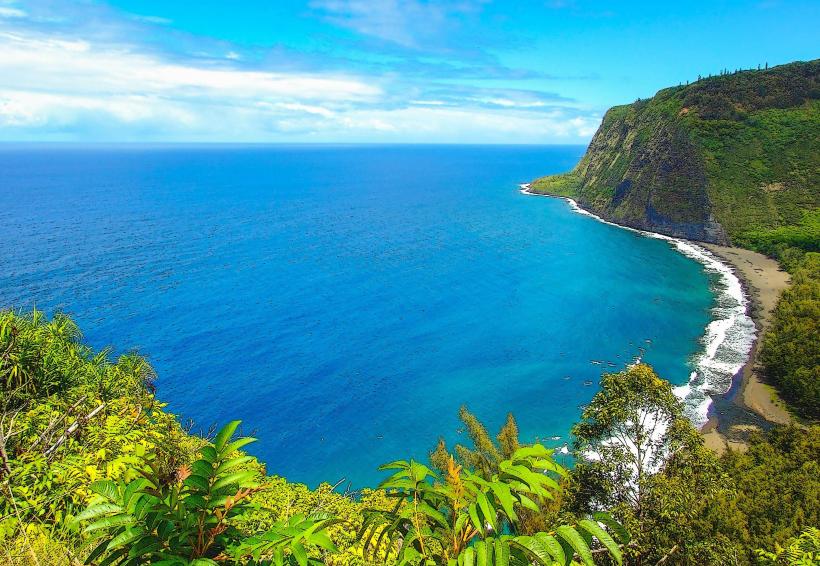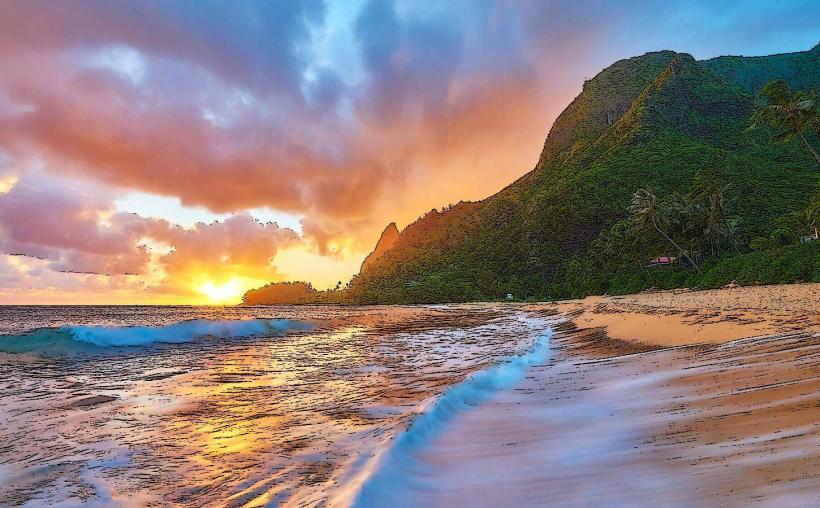Information
Landmark: Lapakahi State Historical ParkCity: Waimea
Country: USA Hawaii
Continent: North America
Lapakahi State Historical Park is an important cultural and historical site located on the Big Island of Hawaii, near the town of Kawaihae in the North Kohala District. The park preserves a traditional Hawaiian fishing village and provides visitors with a glimpse into ancient Hawaiian life. It is a peaceful and scenic location, offering both cultural insight and natural beauty.
Historical Significance
Ancient Hawaiian Fishing Village:
- Lapakahi was once a thriving fishing village, inhabited by native Hawaiians who used the site as a base for fishing and trade. The village dates back to the 15th century, and it was likely occupied for several centuries until the early 19th century.
- The residents of Lapakahi utilized the natural resources of the area, including the nearby ocean for fishing and the land for gathering materials, such as building stones for constructing homes and tools. Fishing was the primary means of sustenance, and the village was well-equipped for a subsistence lifestyle, utilizing traditional Hawaiian methods of fishing and resource management.
Cultural and Environmental Significance:
- The site is a rich example of traditional Hawaiian settlement patterns, where communities were built near the sea to take advantage of marine resources. The layout of the village and the materials used to construct its buildings provide valuable insight into Hawaiian architecture and design.
- The village’s inhabitants constructed stone walls, heiau (temples), homes, and other structures from the volcanic rock found in the region. Many of these structures still remain at the site, allowing visitors to get a firsthand look at how Hawaiians lived and worked in the past.
Fishing and Sustainability:
- Lapakahi’s residents practiced sustainable living, relying on fishing, farming, and gathering to meet their needs. The village's fishing practices were particularly noteworthy, as the community employed fishponds and traditional fishing techniques that helped to maintain fish populations and ensure a steady food supply.
- The park offers a glimpse into the sustainability practices of ancient Hawaiians, which continue to be an important aspect of Hawaiian culture today.
Key Features of Lapakahi State Historical Park
The Village Ruins:
- The main attraction of the park is the preserved ruins of the traditional Hawaiian fishing village. Visitors can explore the stone foundations of homes, walls, and other structures that were once part of the village. These ruins are spread out over a wide area, offering visitors the opportunity to wander through the ancient settlement.
- There is a trail that winds through the village ruins, providing a self-guided walking tour. The trail is marked with signs that explain the history of the site, the significance of the buildings, and the way of life of the people who lived there.
Interpretive Signs and Displays:
- The park has interpretive signs along the trail, which provide historical and cultural context about the village. The signs explain the different types of structures, such as the homes (hale), fishponds, and the heiau (temple) that were used for religious and ceremonial purposes.
- There are also displays explaining how the community utilized the natural environment, including the local sea life and the materials available for building and tools.
The Coastline:
- Lapakahi is located along a beautiful stretch of the Kohala Coast, and visitors can enjoy stunning views of the ocean, rocky shores, and volcanic landscape. The area is peaceful and remote, offering a serene setting for exploring the ruins and enjoying nature.
- The coastline is home to numerous marine life species, and it is an excellent location for scenic views, photography, and birdwatching.
The Visitor Center:
- The park features a small visitor center where guests can learn more about the history of Lapakahi and Hawaiian culture. The center has exhibits, maps, and informational brochures that provide additional details about the village and the surrounding area.
- The visitor center also offers educational programs, including talks and workshops about traditional Hawaiian practices and the history of the Kohala region.
Things to See and Do
Explore the Village Ruins:
- Walking through the ruins of the fishing village is the highlight of a visit to Lapakahi. The self-guided trail allows you to explore the remains of homes, walls, and other structures that offer insights into traditional Hawaiian life. The well-preserved layout of the village is a powerful reminder of the ingenuity and resourcefulness of ancient Hawaiians.
Hiking:
- The trail through the park is relatively short and easy, making it suitable for all visitors. As you walk along the trail, you’ll pass by stone structures, fishponds, and coastal views. There are also scenic spots where you can stop and take in the natural beauty of the area.
Snorkeling and Swimming:
- While swimming and snorkeling are not the primary activities within the park, the nearby waters along the Kohala Coast are perfect for water-based activities. The region has calm waters and an abundance of marine life, making it a great spot for snorkeling or simply enjoying the scenery by the sea.
Cultural and Educational Programs:
- The park occasionally offers educational programs, including traditional Hawaiian craft demonstrations and cultural talks. These programs are a great way to learn more about Hawaiian history, customs, and culture.
Photography:
- With its dramatic coastal views, ancient ruins, and beautiful natural surroundings, Lapakahi is a great spot for photography. The park offers many opportunities to capture the unique beauty of the landscape and the historical remains of the village.
Practical Information
Location:
- Lapakahi State Historical Park is located on the Kohala Coast of the Big Island, approximately 30 miles north of Kailua-Kona. It is situated near the town of Kawaihae and is accessible via Highway 270.
Opening Hours:
- The park is typically open from 8:00 AM to 4:00 PM, seven days a week. However, it is always a good idea to check for any changes in operating hours or special closures, especially during holidays or inclement weather.
Admission:
- There is a nominal entrance fee to visit the park, which helps support the preservation and maintenance of the site. The fee is usually very affordable, and it's worth it for the educational experience and the chance to explore this historical site.
What to Bring:
- Visitors should bring comfortable walking shoes, water, sunscreen, and a hat to protect against the sun. The trail is short, but the area can get hot, so it’s important to stay hydrated and wear sun protection.
- It’s also a good idea to bring cameras for photography and binoculars for birdwatching.
Best Time to Visit:
- The best time to visit is in the morning or late afternoon when the temperatures are cooler, and the sunlight is ideal for photography. The area can be quite warm during the midday hours, especially in the summer, so early or late visits are recommended.
Why Visit Lapakahi State Historical Park?
Cultural Insight: The park provides an opportunity to learn about traditional Hawaiian village life, the role of fishing and sustainability in Hawaiian society, and the cultural practices of the ancient inhabitants of the region.
Natural Beauty: Located along the stunning Kohala Coast, Lapakahi offers breathtaking views of the ocean, volcanic landscape, and remote coastline. It’s a peaceful place to relax and enjoy nature.
Educational Experience: The park’s exhibits, interpretive signs, and programs provide a deeper understanding of Hawaiian history, culture, and the way people lived in ancient times.
Scenic Exploration: Whether you’re interested in hiking, photography, or simply taking in the views, Lapakahi offers a serene and scenic environment perfect for exploration.
Visiting Lapakahi State Historical Park offers a chance to connect with the past and learn about the rich cultural heritage of Hawaii. The park is an excellent destination for those interested in Hawaiian history, archaeology, and sustainability, as well as for those who appreciate natural beauty and peaceful surroundings.

